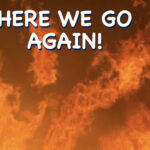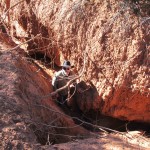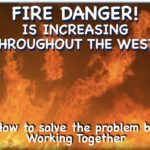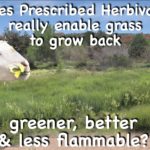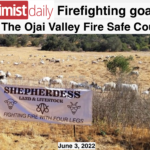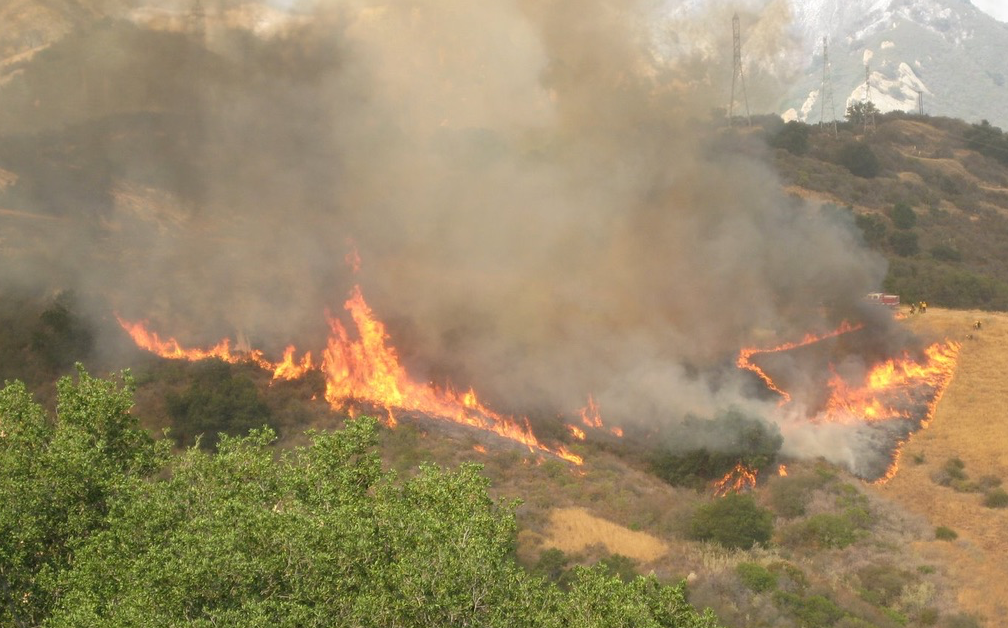
HERE’S HOW…
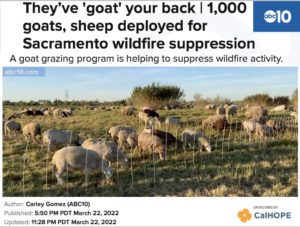
While surfing the web recently (5/1/2022), I discovered a number of articles (some very recent) that described using (of all things) grazing to reduce the likelihood, extent, and severity of wildfire in the contemporary American West.
Why these projects and their announcements are so important, I believe, is because they represent a step toward dealing with one of the most serious environmental problems threatening the American West today — WILDFIRE!
How serious? In the last few years hundreds of thousands (in some years millions) of acres have burned in the West destroying thousands of homes and accelerating the advance of climate change and global warming while causing deforestation, desertification, catastrophic erosion, species extinction and more.
How could grazing deal with a problem so huge and serious?
Grazing, it turns out, is an effective, relatively easily applicable way to reduce the amount of burnable fuel (dry grass, weeds and shrubs) that make areas more prone to wildfires igniting, growing, and spreading
Significantly, most of these articles about fire-eating animals (goats and sheep mostly) involve areas in California, a state which has been experiencing a huge surge in wildfires over the last few years (as has my home state Arizona and other western states, too, as a matter of fact).
So, to give you some idea of the size of this turning tide, I’ve added a map featured on the web regarding the application of this approach in the vicinity of Santa Barbara, California — an area in which I lived a few years ago.
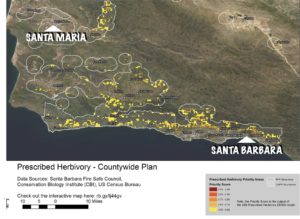
Each yellow dot on this map marks an area as designated for “Prescribed Herbivory” — the “application of a specific kind of livestock at a determined season, duration, and intensity to accomplish defined vegetation or landscape goals” (in this case, to make an area “Fire Safe”).
This should give you idea of the extent to which grazing (by goats and sheep, and even by cows, horses, and bison) is being considered as a means to turn the tide against the wildfire pandemic currently raging across the American West. With that in mind I’d like to offer some insights that I believe will add to the power and effectiveness of this turning tide and help make more of the West more fire-proof.
First of all, if applying grazing to wildfire prone areas is considered an effective means to reduce their vulnerability to wildfire (as the examples just described support): Not applying grazing to an area recognized as susceptible to wildfire could then be considered as “leaving that area more vulnerable to wildfire.”
In verification of that, I know that many areas of publicly owned or controlled land here in the Southwest that have had grazing as a means of management limited and/or removed and as a result those areas have become more fire prone. As a result many are burning.
To remind myself of the truth of this insight, all I have to do is look out my back window at neighboring land that once was grazed, but no longer is, and realize how flammable it has become — flammable enough to have me out there with my weed-whacker “grazing” it after each growing season.
Or, as I did recently, I can go visit ecologically notable areas that once were grazed but now are allegedly “protected” — an area called by USFS scientists “The Little Slice of Heaven,” for instance.
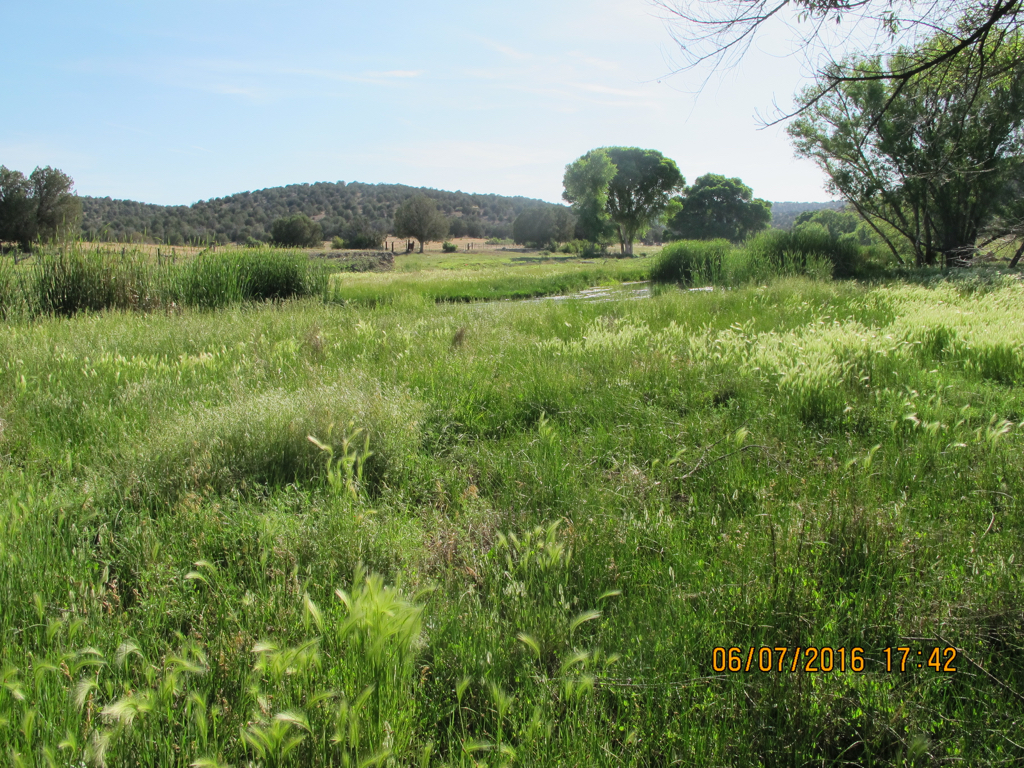
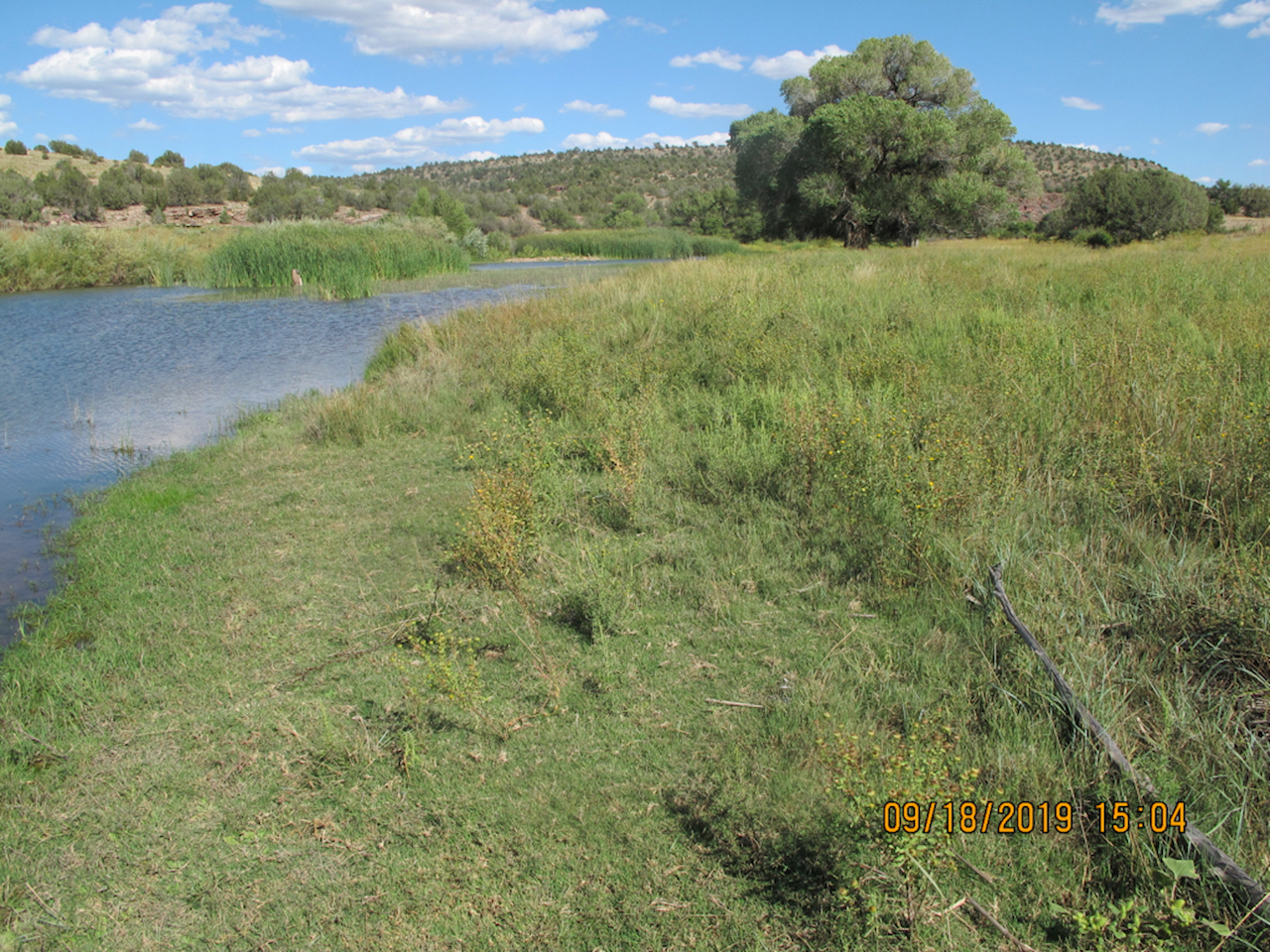

Examples like this can help us realize how this kind of “protection” actually makes an area in need of a real solution, and that fake protection is no such solution.
How can we facilitate this realization?
If an area susceptible to wildfire is under consideration for “fire prevention” grazing, or at least ought to be because of its fire-prone nature, and some governmental agency or activist group takes action to prevent or prohibit the application of this remedy and succeeds, and then…
The area catches fire and causes a huge amount of damage (As many wildfires do) couldn’t/shouldn’t the agency or activist group responsible for preventing the application of the grazing fire remedy be held responsible for the damage caused by the fire? And what about those who suffered loss of home, property or life because of the fire — shouldn’t they be able to sue for full damages and punitive compensation?
If a few instances of that were to happen, the way we deal with wildfire danger (actually public land management in general) would change in a very significant way. For the first time ever, land management that labels itself “protection” or “preservation” would become as accountable for the results it causes as land management we call “use” — ranching, for instance
And why shouldn’t that be the case? After all, activist groups who cause an area to be managed in a certain way — protected (ungrazed) — do it in order to raise “not for” profits. And if that money-making use of a piece of land makes it more, rather than less, likely to burn and a fire does occur —burning homes, outbuildings, grasses and trees on neighboring lands — shouldn’t the groups or individuals who could be shown to be responsible for those fires by preventing the land from being made more fire-proof by grazing be held accountable for the damages they helped to cause?
And while we’re at it, what about the other impacts of this type of mis-management mis-named “protection?” Consider the diminishment or even extirpation of threatened or endangered species that has happened on land mis-managed under the “protection” assumption. How about the severe erosion and soil loss caused by rainwater washing across lands denuded from lack of grazing? Or dust storm/air pollution from winds blowing across that land.
Aren’t all of us who manage the land responsible for the results our management causes?
(Examples of all of these are posted on rightwaytobegreen.com.)
